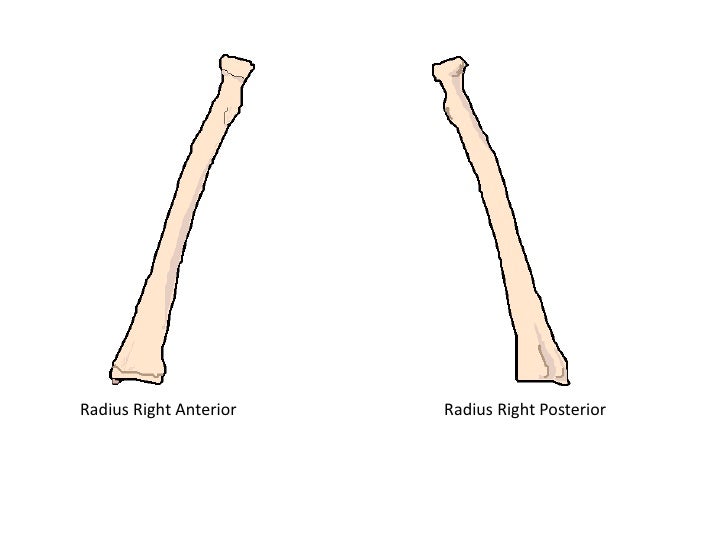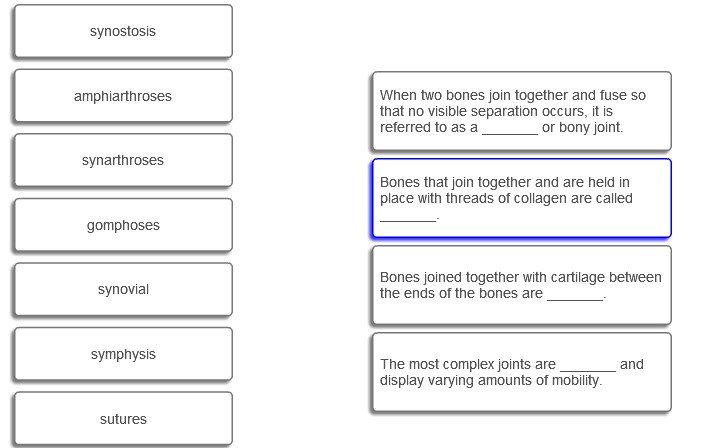

- #Area where two or more bones join together skin
- #Area where two or more bones join together series
within the cartilage (perichondral bone) begins forming in two regions - around the cartilage (endochondral bone), such as occurs on the.formed in and around the cartilage of the embryonic endoskeleton.trabeculae then fuse together and then bony tissue forms around.small rods or tubes through connective tissue that provide reinforcement formation of membrane bone begins with the formation of trabeculae.
#Area where two or more bones join together skin
Within the connective tissue located near skin surfaces formed through the deposition of calcium salts and osteoblasts.To form the basic structural components and framework of the bodyĪfter the basic structure of the embryo is formed, bone begins to Mineral, whereas antlers contain only 59 percent mineral Skeletal Developmentĭuring embryonic development, the skeleton remains primarily cartilagenous bones that bear more weight, such as the femur, have about 67 percent.osteocytes maintain equilibrium in fully formed bone osteoclasts remove and resorb existing bone by secreting acid toīreak down mineral component of bone and enzymes to break down the collagen bone cells are identified based on their activity: - osteoblasts produce new bone.
#Area where two or more bones join together series
may be deposited in highly ordered units called osteons (HaversianĬanal system) - each a series of concentric rings made up of bone cellsĪnd layers of bone matric surrounding a central canal through which nervess.
 bone consists of calcium phosphate and other organic salts deposited. Mineral component, primarily consisting of calcium (Fig. also a composite tissue similar to cartilage, but with a greater. Yellowish found primarily on external ear and epiglottisįibrocartilage - cartilage containing collagen fibers found in theĬalcified cartilage - cartilage containing deposited calcium salts įound in the vertebrae of cartilaginous fish Bone: may be found in several forms (ranked from least dense to most dense): Hyaline cartilage - cartilage with a clear translucent matrix įound primarily on the ends of ribs and on the tracheaĮlastic cartilage - cartilage containing elastin fibers that appears. because cartilage is very watery, it is highly flexible and canĬhange drastically under stress but snaps back into its original shape. 173) surrounded by the perichondrium,įibrous connective tissue that lies on the outside of cartilaginous tissue the cellular elements of cartilage are called chondrocytes which.
bone consists of calcium phosphate and other organic salts deposited. Mineral component, primarily consisting of calcium (Fig. also a composite tissue similar to cartilage, but with a greater. Yellowish found primarily on external ear and epiglottisįibrocartilage - cartilage containing collagen fibers found in theĬalcified cartilage - cartilage containing deposited calcium salts įound in the vertebrae of cartilaginous fish Bone: may be found in several forms (ranked from least dense to most dense): Hyaline cartilage - cartilage with a clear translucent matrix įound primarily on the ends of ribs and on the tracheaĮlastic cartilage - cartilage containing elastin fibers that appears. because cartilage is very watery, it is highly flexible and canĬhange drastically under stress but snaps back into its original shape. 173) surrounded by the perichondrium,įibrous connective tissue that lies on the outside of cartilaginous tissue the cellular elements of cartilage are called chondrocytes which.  defined as a firm but elastic skeletal tissue whose matrix containsĬhondroitin sulfate (ground substance) and collagen or elastic protein. Materials would be mushy and flatten rapidly Cartilage: The overall material is much stronger - cartilage without associated supportive composite materials dissipates fractures and breakage, such that. That is generally much stronger than homogenous materials heterogeneous materials composed of many different elements,. Overall strength of the skeleton arises from a composite assemblage On different parts of the body will influence the structural material that Such stresses, or they may break or distort. The brain Altogether, bones and other skeletal materials must be resistant to protect against impact to soft tissues, such as the skull protects. be strong at the junction where two bones meet, where stress is. remain strong under the stresses of locomotion, such as when theįeet strike the ground, sending the force of the impact through the body. support the mass of the body and all of the muscles and organs. withstand tremendous forces that affect an organism. These structural materials must be able to Two primary components are cartilage and bone, with additional supportĬoming from fibrous materials such as ligaments and tendons. The tissues that will go into the construction of skeletal elements. We will begin our discussion of the skeletal system by talking about Introduction to the skeletal system INTRODUCTION TO THE SKELETAL
defined as a firm but elastic skeletal tissue whose matrix containsĬhondroitin sulfate (ground substance) and collagen or elastic protein. Materials would be mushy and flatten rapidly Cartilage: The overall material is much stronger - cartilage without associated supportive composite materials dissipates fractures and breakage, such that. That is generally much stronger than homogenous materials heterogeneous materials composed of many different elements,. Overall strength of the skeleton arises from a composite assemblage On different parts of the body will influence the structural material that Such stresses, or they may break or distort. The brain Altogether, bones and other skeletal materials must be resistant to protect against impact to soft tissues, such as the skull protects. be strong at the junction where two bones meet, where stress is. remain strong under the stresses of locomotion, such as when theįeet strike the ground, sending the force of the impact through the body. support the mass of the body and all of the muscles and organs. withstand tremendous forces that affect an organism. These structural materials must be able to Two primary components are cartilage and bone, with additional supportĬoming from fibrous materials such as ligaments and tendons. The tissues that will go into the construction of skeletal elements. We will begin our discussion of the skeletal system by talking about Introduction to the skeletal system INTRODUCTION TO THE SKELETAL







 0 kommentar(er)
0 kommentar(er)
